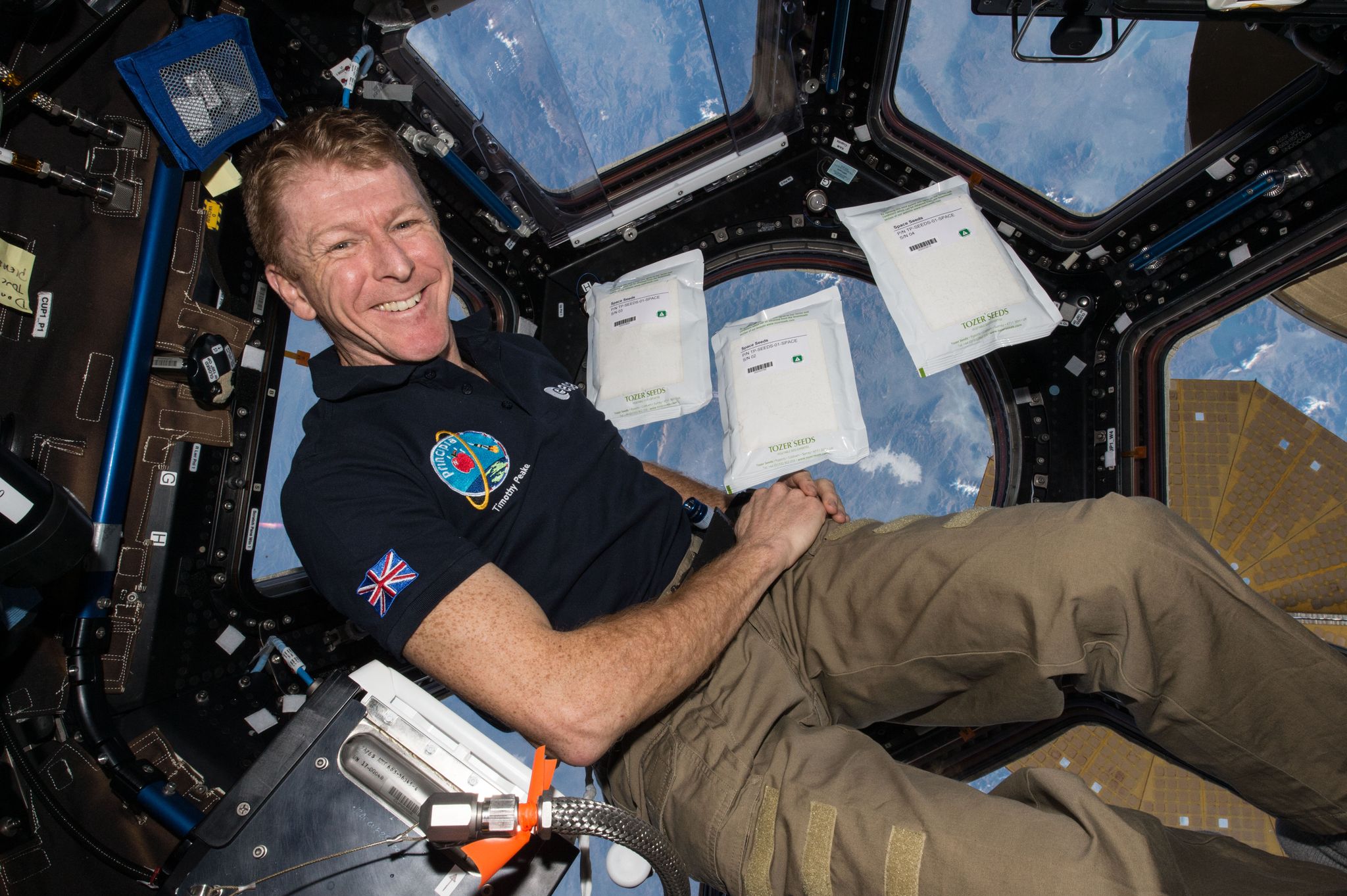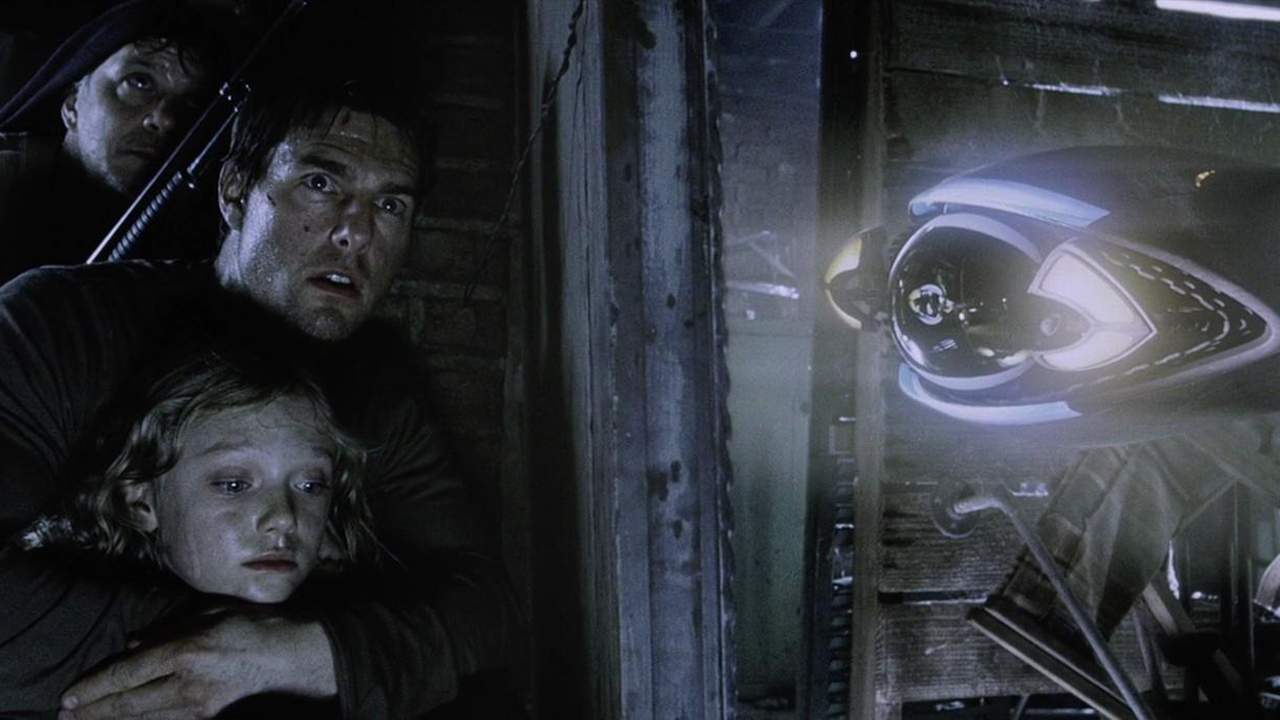Students grow 'rocket lettuce' from space seeds

While British astronaut Tim Peake was on board at the International Space Station in 2015 and 2016, he supported a project involving a pack of "rocket lettuce" (arugula) seeds, snapping multiple pictures during the seeds’ six months in space. Students across the United Kingdom then grew those seeds back on Earth.
During their time on board the space station, the "rocket seeds" endured larger doses of radiation than they would receive on Earth, a fact that would slightly slow their growth after thousands of schoolchildren planted and cared for them back on the planet. The results from this experiment are helping scientists to understand how future astronauts might grow food on the moon and Mars.
After the UK Space Agency came up with the idea to send speeds to space, it was only natural that they would reach out to the Royal Horticultural Society (RHS) for aid. The British organization, which describes itself as the "world's leading gardening charity," not only works to encourage people to grow plants, they also have a successful school and youth program that allowed them to recruit over 8,000 participating schools and groups of children for this project.
Related: Space Salad: Astronauts Harvest 3 Different Crops

The experiment sent 4.4 pounds (2 kilograms) of Eruca sativa (arugula) seeds to the space station. After the seeds returned to Earth, the children planted them and compared their growth to seeds that never left the planet.
The project found that the seeds that had traveled to the space station took an extra hour to complete their two visible steps of gemination, a small but significant result that could have greater implications for longer space journeys. All of the seeds carried into space sprouted, with no atypical seedlings, further showing how viable it might be to carry seeds on longer trips through space.
When astronauts set up bases on the moon or Mars, they will need to carry their own food. Spaceships may carry specially developed containers of plants that can feed astronauts during the journey but are unlikely to carry enough to feed explorers on a new world.
Breaking space news, the latest updates on rocket launches, skywatching events and more!
"If humans are one day to explore farther into space than the moon, they will need to supplement their stored food with fresh food," said Jeremy Curtis , head of the UK Space Agency's space education program, told Space.com. "That means growing plants, and the easiest way to transport them is to use nature's own storage and transport system — seeds, which are light and robust."
"Freshly produced salad of any kind will be important during longer space travel, as well as upon arrival on another planet," Gerhard Leubner, a biologist at the Royal Holloway University of London and an author on the new research, told Space.com by email. "For gardening on other planets, preserving seed quality during the spaceflight is indeed important."
Choosing 'rocket seeds'
After considering several options, the RHS decided to send the seeds — the species Eruca sativa, nicknamed "salad rocket" —a variety known in the United States as arugula. Limited by the weight of the seeds that could be carried into space, the organization looked for small seeds that would grow quickly and be relatively easy to care for to make the experiment more exciting for the students."Rocket not only fitted the bill for all of these but also seemed apt for a space-themed project," Alana Cama, Schools and Groups Program Manager for the RHS, told Space.com by email.
While wild seeds germinate and grow at different rates, agricultural practices have led to uniform batches of seeds that generate at the same time under the same conditions. According to lead author Jake Chandler, also a biologist at Royal Holloway University of London, seed quality can be influenced by many factors of seed production, most of which are bred out in domesticated crop species.Seed quality can affect how quickly the seeds age, reducing their germination performance, or how well they grow.
"Assuming the initial seed quality is good, then proper storage will enable these traits to be maintained for as long as possible," Chandler said.
Related: Space Food Photos: What Astronauts Eat in Orbit
On the space station, the seeds absorbed more than a hundred times the radiation doses they would have experienced on the Earth's surface. Accumulated damage (like damage from radiation) to the seeds can induce aging, or the deterioration of the seed quality. Dry seeds are not able to repair themselves until they have been hydrated, a process that can help to repair aging but which results in delayed germination.
In their experiment, the researchers found that the seeds that had traveled into space grew an average of 1.1 hours slower than their Earth-based counterparts.
"This would practically not be a big issue for using these seeds," Chandler said. "However, it is indicative that there is an increased rate of deterioration in space, and as the journeys to other worlds, such as the moon and Mars, may take longer and result in, [for example] , exposure to even higher radiation doses, there could be larger effects then."
Additionally, rocket seeds tend to age more slowly than seeds of other species, Leubner said, which means that other tasty tidbits could suffer from more damage during space travel.
While radiation was the most likely cause of damage with these seeds, the researchers also suspect that the mechanical vibrations caused by launching into space and then returning to Earth had a significant effect.
Previous studies have shown that vibration can have both positive and negative effects on seed germination. By altering the integrity of the seed coat, vibrations can potentially cause seeds to take in water and oxygen faster. However, damage is also likely to accumulate faster, slowing the germination time. The rocket seeds that returned to Earth had higher moisture content, suggesting that the vibration may have affected them.
Despite the harsh space environment aboard the space station, the salad rocket was still able to grow once planted back on Earth, albeit at a slower rate. But for longer space journeys, such as a mission to Mars where the seeds would experience more than five times as much radiation as they did aboard the station, greater measures should be taken to protect the important food source, the study found.
"If [seeds] can survive extended spaceflight conditions, then we may be able to grow food en route to Mars or even on the surface — so we have completed the first step for one variety," Curtis said.
The study was published in the journal Life.
Follow Nola on Facebook and on Twitter at @NolaTRedd. Follow us on Twitter @Spacedotcom and on Facebook.
Join our Space Forums to keep talking space on the latest missions, night sky and more! And if you have a news tip, correction or comment, let us know at: community@space.com.

Nola Taylor Tillman is a contributing writer for Space.com. She loves all things space and astronomy-related, and always wants to learn more. She has a Bachelor's degree in English and Astrophysics from Agnes Scott College and served as an intern at Sky & Telescope magazine. She loves to speak to groups on astronomy-related subjects. She lives with her husband in Atlanta, Georgia. Follow her on Bluesky at @astrowriter.social.bluesky
